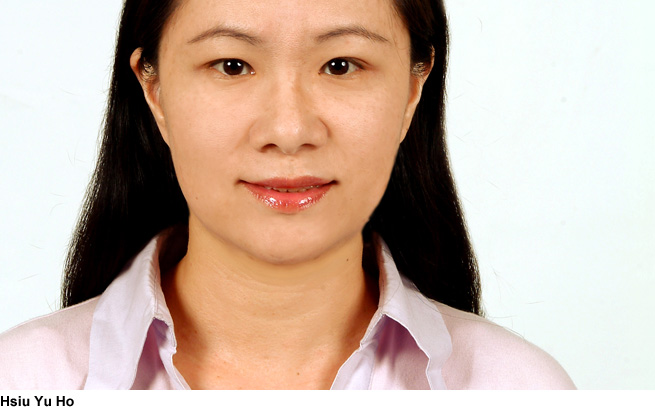We must improve medication safety for our elders.
 As frontline staff members who provide elder care, nurses should inquire more frequently about, and develop better understanding of, medication use among older patients.
As frontline staff members who provide elder care, nurses should inquire more frequently about, and develop better understanding of, medication use among older patients.
Elder care is one of healthcare’s major challenges. According to the 2016 Health Statistics Index published by Taiwan’s Ministry of Health and Welfare, elders accounted for 10.9 percent of Taiwan’s population in 2011, thus meeting the criterion for an aging society as defined by the World Health Organization (WHO). According to Taiwan’s National Development Council, the percentage of elderly people in Taiwan’s population reached 14.5 percent in 2018, which makes it an aged society, according to WHO’s definition. By 2026, the percentage of older people in Taiwan will increase to 20 percent, leading to what WHO defines as a hyperaged society, and may reach 38.9 percent by 2061. These data indicate how important the elder care issue is, as use of medical resources and demand for healthcare will both increase.
PIM, a global problem
Usage of potentially inappropriate medications (PIM) by elderly people is a serious global public health problem. Elderly patients are prone to comorbidities, multiple illnesses, and polypharmacy, thus increasing their risk of exposure to drug-to-drug interactions and PIM. Studies show that use of PIM by elderly people causes major adverse drug events, lower health-related quality of life (poor health), emergency hospitalization, and emergency treatments—even death—and leads to higher medical or total healthcare costs for PIM users compared to those who do not use PIMs.
A systematic literature review shows that, depending on sample size, research site, and assessment tools, prevalence of PIM use among elderly people varies greatly, ranging from approximately 3.6 percent to 92.0 percent. Prevalence of PIM use among elderly people in Taiwan is similar—9.8 percent to 91.2 percent—suggesting that PIM use in Taiwan is no less serious than in North America and Europe.
Factors that affect medication and PIM use among older people are complex, and the consequences of PIM use can be difficult to describe, whether in terms of specific impact of one disease on another or interaction between one drug and another. Because of the complex mix of issues, symptoms, and medical treatments, past studies focused on specific drugs for single diseases or multiple prescriptions for elders and paid little attention to comorbidities. Even though many empirical studies on PIM use have been conducted, causal factors are still hotly debated and should, therefore, be examined further.
Patient safety comes first
During our study of medication safety for elders, other healthcare staff members frequently confronted us. Physicians questioned us for challenging their prescription authority. Pharmacists accused us of overstepping our boundaries and invading their turf. Even some nurses doubted our right to challenge physician authority and pharmacist professionalism, given that we were only in charge of medication administration.
My nursing philosophy comes from three “IC” philosophies I hold in high regard—I care, I can, and I change. I have no greater sense of accomplishment in life than the feeling I have when I face challenges and overcome them. I believe physicians, pharmacists, and nurses all play important roles in ensuring medication safety for elderly clients. By working together, members of multidisciplinary teams improve health outcomes, enhance quality of life, and reduce morbidity and mortality caused by potentially inappropriate medication.
Moreover, I believe nurses can reduce the risk of adverse drug events and achieve better health outcomes by reviewing medications prescribed for elderly patients. Medication administration is a critical part of nurses’ routine work. As frontline staff members who provide elder care, we should inquire more frequently about, and develop a better understanding of, medication use among our older patients. We should clarify indications and treatment goals of current prescriptions, verify risk factors of PIM use, and serve as bridges of communication between our elderly patients and the medical team.
Because empirical nursing research on this issue is limited, I believe PIM use (and related factors) among elderly patients both before and after hospitalization is an important topic for investigation. Thus, it is the theme of my doctoral dissertation.
Duty-bound
I believe proper interventions can elevate medication safety and care quality, reduce unnecessary medical expenses, enable better disease management, and provide the best quality of life for elders. Thus, working with my doctoral dissertation adviser and clinicians, information specialists, and pharmacy specialists, I am currently conducting research that I’ve titled “Medication safety programs for the elderly: The effectiveness of applying a computer-aided tool for reviewing prescribed medications by homecare nurses in the use of potentially inappropriate medication among older patients.”
I believe we are duty-bound to aim at achieving medication safety for our elders. We care, we can, and we change. RNL
Hsiu Yu Ho, PhD, RN, is an instructor in the Department of Nursing at Yuanpei University of Medical Technology in Taipei, Taiwan.
Editor’s note:
Hsiu Yu Ho will present “To Explore the Prevalence and Related Factors of Potential Inappropriate Medication Use in Older Adults” on Friday, 20 July 2018, at Sigma’s 29th International Nursing Research Congress in Melbourne, Australia. Register here for congress.
Check out these additional articles by presenters at the 29th International Nursing Research Congress.